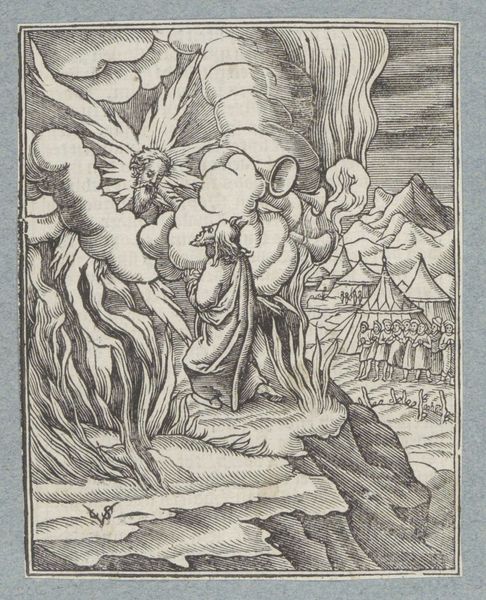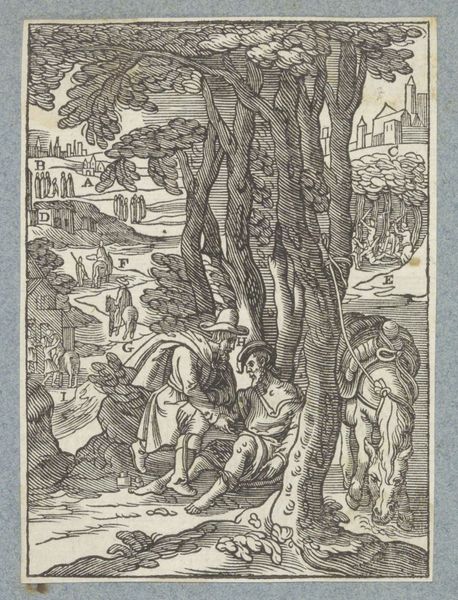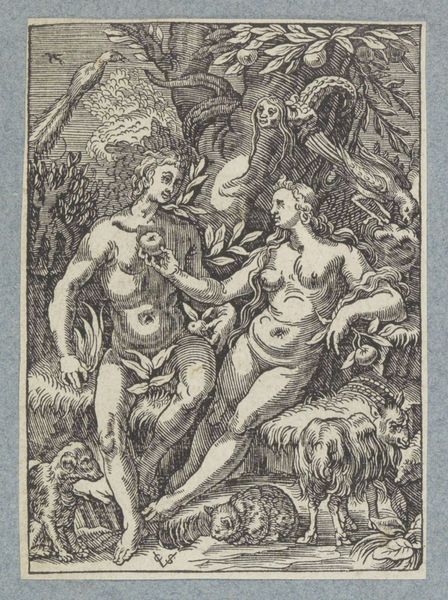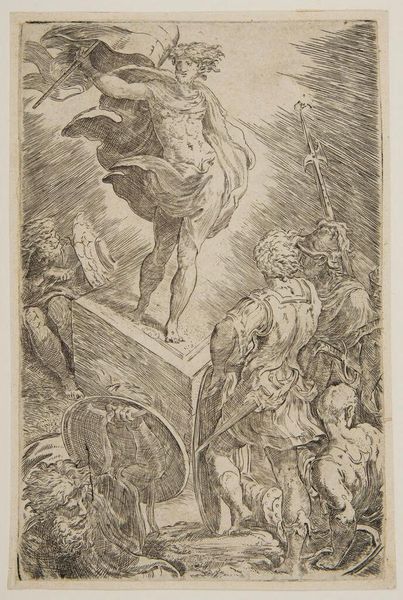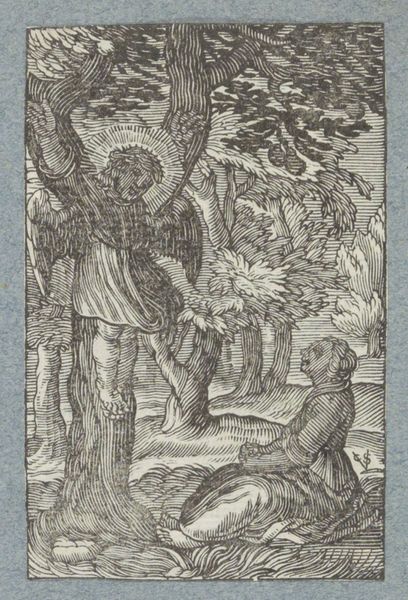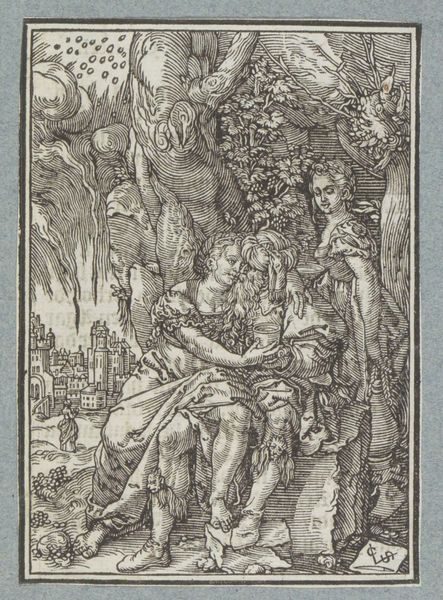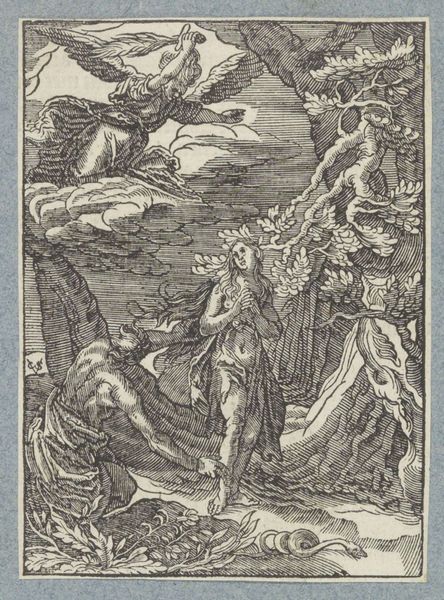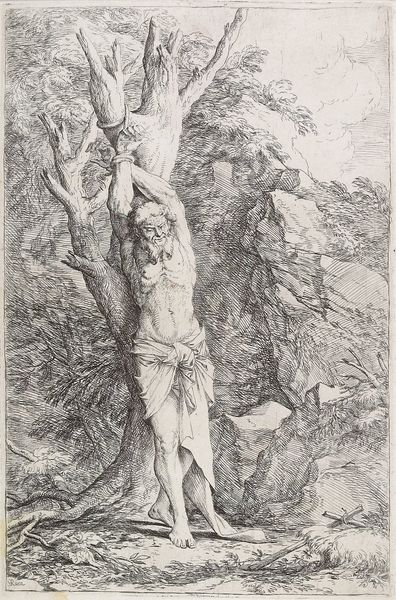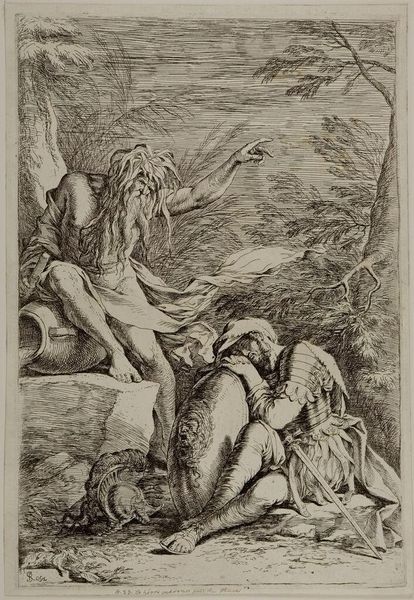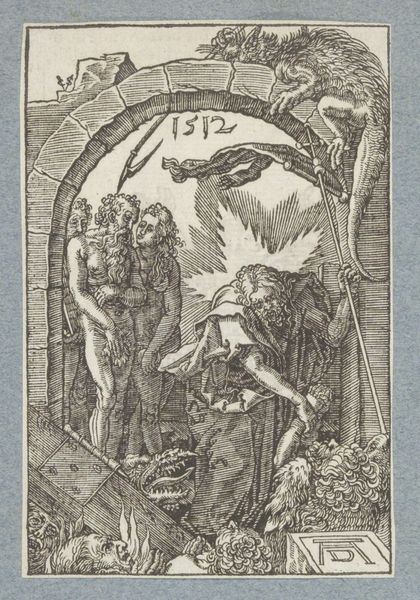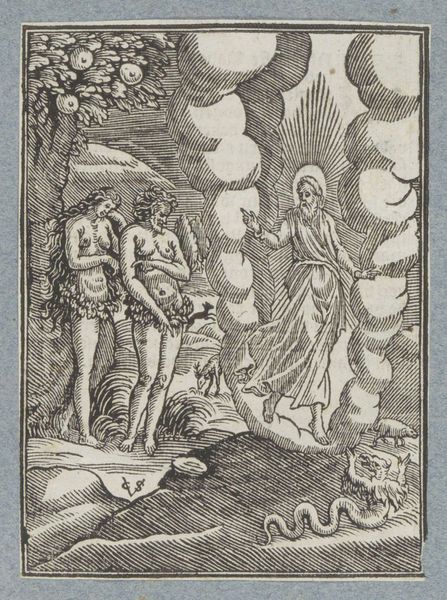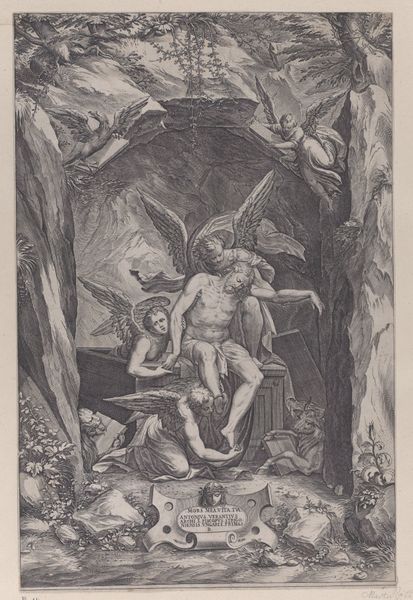
drawing, ink, pen
#
drawing
#
allegory
#
baroque
#
pen sketch
#
pencil sketch
#
sketch book
#
landscape
#
figuration
#
personal sketchbook
#
ink
#
sketchwork
#
pen-ink sketch
#
pen work
#
sketchbook drawing
#
pen
#
storyboard and sketchbook work
#
sketchbook art
Dimensions: height 110 mm, width 88 mm
Copyright: Rijks Museum: Open Domain
Curator: This intriguing ink drawing, "Adam, Eve, and Death," by Christoffel van Sichem II, made around 1645, certainly holds a potent scene. It's currently residing here at the Rijksmuseum. Editor: My first thought is the sheer bleakness. Even in this tiny scale, the artist achieves such a heavy feeling of loss. The stark contrast between the black ink and the pale figures is especially affecting. Curator: Precisely. Consider the context of its making – the Dutch Golden Age, rife with Calvinist sensibilities and anxieties around morality. The stark use of line, achieved with the pen, underscores that very austere mood, and remember this piece isn't monumental; its power lies in its intimacy and precision of production. Editor: Absolutely. Death is portrayed traditionally, yet its positioning feels secondary to the posture of Adam and Eve; their downcast gaze towards the death itself tells a very evocative tale. There is the cultural knowledge here – about their culpability. Curator: Notice how van Sichem's technique contributes to this allegory of loss. The intricate cross-hatching used in the rocks and trees provides not just form, but also textures – material and psychological that convey this difficult situation that has impacted all human labour since the fall. Editor: Yes, and there's a deliberate visual language at play. The serpent entwined near Eve echoes the classical imagery of temptation, while Adam wielding the shovel signifies their new toil after expulsion from Paradise, no longer carefree inhabitants of the Garden of Eden. The image creates, then, a clear narrative arc, embedded in Christian art. Curator: In essence, Van Sichem’s work embodies the shifting cultural landscapes of labour during this early Capitalist period, through allegorical subject matter and the means of production using something as rudimentary as pen and ink. Editor: It really illuminates how the same archetypal story can be continually reinterpreted, filtered through the values and visual lexicons of its own time, as we all attempt to come to grips with morality and our fragile existences. Curator: A very poignant conclusion. This drawing gives us a stark understanding of both early capitalist anxieties, and a human story we’re always going to continue to repeat. Editor: Indeed. I’m leaving with a renewed sense of wonder, a new visual perspective on how artists transform raw ideas into lasting icons.
Comments
No comments
Be the first to comment and join the conversation on the ultimate creative platform.
